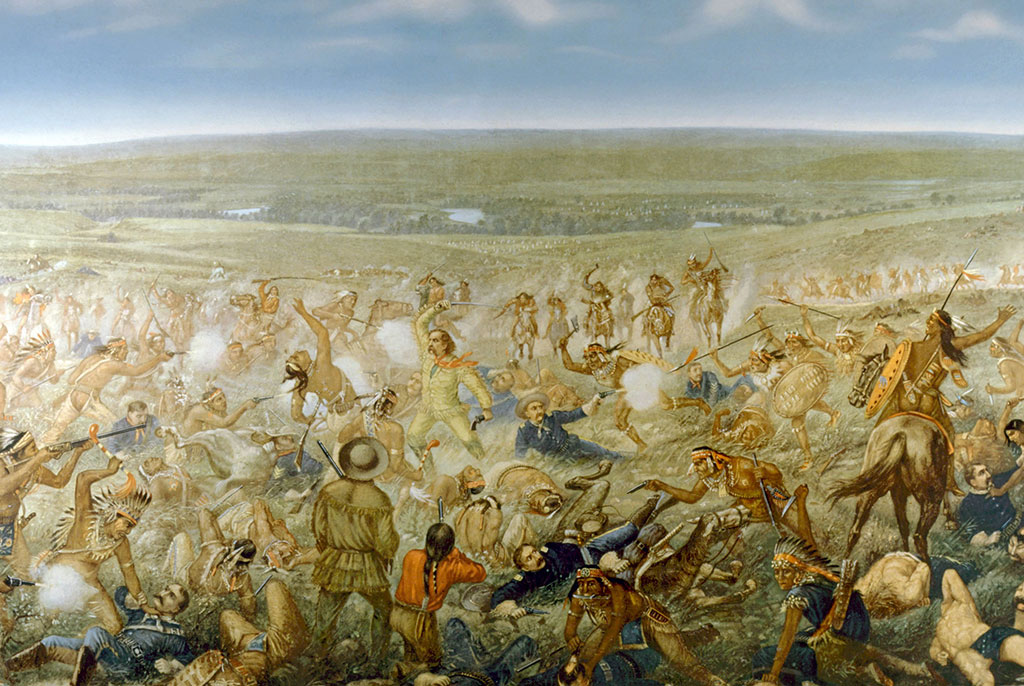How leaders decide: Three lessons to learn from one of U.S. history’s bloodiest days

Winners, we’re told, write history. Yet the history of one of the bloodiest days on the American frontier — June 25, 1876 — was written by the losers.
For nearly 100 years, Americans portrayed the Battle of Little Bighorn, commonly known as “Custer’s Last Stand,” as a heroic engagement led by General George Armstrong Custer, the “daring boy general” of the Civil War. As the story went, the U.S. Army’s Seventh Cavalry soldiers fought valiantly but eventually were overpowered by Native American warriors, who vastly outnumbered them.
But that’s not what actually happened. Decades later, when the surviving Native American combatants were finally interviewed about the battle, they shared a different narrative — one that offers important lessons for today’s leaders.
Lesson 1: Listen to the voice of experience, not your ego.
On June 25, 1876, the Lakota, Cheyenne and Arapaho tribes were not seeking trouble — far from it. They were following buffalo herds, which they depended on for food, clothing and shelter. The Plains tribes were also gathering for their most important religious event of the year: the Sun Dance.
Meanwhile, General George Armstrong Custer was ordered to “round up the hostiles.” He imagined a successful outcome of this mission might lead to the presidency of the United States. He ignored the reality that the Native Americans outnumbered his troops 10 to 1.
Clearly, Custer was daring. But his determination to prove himself, combined with impulsive decision-making, produced a volatile leader in search of heroics. His bad judgment, incompetence and indifference eventually led to the annihilation of the Seventh Cavalry.
Lesson 2: Collect facts and assess conditions before making critical decisions.
At 36 years old, Custer was a complicated man who battled American Indians ruthlessly, yet admitted he would resist if he were one of them. He was a decorated officer who’d been court-martialed twice in six years. He relished a fight; his style of leadership on the battlefield was poorly suited for peacetime.
Custer was facing the largest Native American encampment in North America, comprising 12,000 people. One-third were led by Sitting Bull, whose bravery, political prowess, generosity and inner strength positioned him as a leader of leaders. During the Sun Dance, Sitting Bull had a vision in which he saw soldiers “as thick as grasshoppers” falling upside down into the Lakota camp. It foreshadowed his victory over the army.
By sun-up that Sunday, Custer’s scouts reported seeing large numbers of Indians — which meant that the Native Americans had likely seen the Seventh Cavalry, too. The element of surprise was lost. Custer was afraid they would slip away and scatter, so he made his first mistake: pursuing his quarry against unknown odds.
At noon, Custer halted his regiment between the valleys of the Rosebud and Little Bighorn Rivers and made his second mistake: splitting his troops into three combat groups and a pack train.
Two hours later, the advance reconnaissance party returned, and scout Mitch Bouyer told Custer, “There are more Sioux than all of your soldiers put together have bullets.” All scouts agreed. Custer rebuked them and ordered his troops to move out.
The sun blazed as Custer mounted a ridge and saw below what appeared to be a deserted village. “We’ve caught them napping,” he shouted. It was just after 3 p.m. when Custer made his third and final mistake.
“After them, boys! Charge!”
Lesson 3: Lead people in the right direction, or risk desertion.
Crazy Horse yelled the Sioux war cry — Hoka hey! Follow me / Today is a good day to fight / Today is a good day to die — as warriors engaged Custer’s three separate combat groups.
Major Marcus Reno’s unit attacked first, losing half of his 112 men before ordering a disorderly retreat. Reno survived, and later was cleared by a court of inquiry for his performance, though the stigma of drunkenness and cowardice followed him to his grave.
Captain Frederick Benteen commanded 140 men and failed to comply with Custer’s order to reinforce him. His hatred of Custer may have been one reason. He survived the day; his reputation did not.
Custer and 300 men attacked the village, and Custer was shot in the chest crossing the river. Witnesses recall that, as soon as Custer fell, his men lost their fighting spirit. They dragged their commander to the ridge, where the battalion was annihilated — 20 minutes after Custer had ordered the attack.
Questions for reflection
Battle or no battle, modern-day leaders can learn from the mistakes Custer made. Questions to ask yourself include:
- Where are the gaps in your knowledge and experience that may be skewing your perspective?
- What’s your process for proceeding with a decision in the face of data that suggests you shouldn’t?
- How might your ego be clouding your decision-making?
- If you found yourself in a tough spot, who are the key people you’d call for help? How would they respond?
- Will your “troops” follow you? Should they?
This article is an edited excerpt from How Leaders Decide: A Timeless Guide to Making Tough Choices, the #1 new historical reference book on Amazon.
Related articles
5 leadership lessons from FDR that inspire reinvention during times of change
Active listening as a leadership skill

